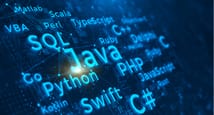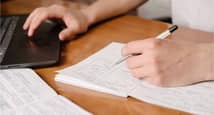- What is Arduino?
- How download Arduino Codes for this course
- Introduction to Arduino Uno and Arduino boards
- Arduino IED (Integrated Development Environment)
- Breadboards, Resistors and LED Blink Part-1
- Breadboards, Resistors and LED Blink Part-2
- Introduction to Binary, Decimal and Hexadecimal and Octal base numbers
- Introduction to Arduino Serial Monitor
- Data Types and Variables - Part 1
- Data Types and Variables - Part 2
- Conditional statements (if, if else and else)
- Using Push Buttons with Arduino
- Introduction to Potentiometer - Par 1
- Introduction to Potentiometer - Par 2
- Getting Additional 5V pin from Arduino boards
Arduino for Absolute Beginners by Robojax
Quick Facts
| particular | details | |||
|---|---|---|---|---|
|
Medium of instructions
English
|
Mode of learning
Self study
|
Mode of Delivery
Video and Text Based
|
Course overview
Arduino is an open hardware prototyping platform that may be used by hobbyists, enthusiasts, and developers to design and create real-world products. The Arduino for Absolute Beginners by Robojax certification course was created by Robojax, an online platform for Arduino enthusiasts, and is offered on Udemy for students who wish to learn the fundamentals of Arduino programming from the ground up.
Arduino for Absolute Beginners by Robojax online classes offer 41 hours of video lectures and 239 hours of study materials that teach students about various sensors, switches, loops, arrays, functions, and obstacle avoidance methods and modules including infrared, ultrasonic, and laser. Arduino for Absolute Beginners by Robojax online training also covers numerous Arduino development boards, such as wifi development boards, Bluetooth development boards, NodeMCU, IoT microcontrollers, and more.
The highlights
- Certificate of completion
- Self-paced course
- 41 hours of pre-recorded video content
- 239 downloadable resources
Program offerings
- Online course
- Learning resources. 30-day money-back guarantee
- Unlimited access
- Accessible on mobile devices and tv
Course and certificate fees
Fees information
certificate availability
Yes
certificate providing authority
Udemy
Who it is for
What you will learn
After completing the Arduino for Absolute Beginners by Robojax online certification, students will develop an in-depth understanding of Arduino programming using the functionalities of Arduino IDE. Students will learn about various switches and sensors like touch sensors, temperature sensors, and channel sensors, as well as how to work with current and voltage using Arduino. Students will learn about dc motors, servo motors, and stepper motors, as well as the fundamentals connected with functions, arrays, loops, and control relays. Students will also learn about several kinds of Arduino development boards, such as wifi development boards, Bluetooth development boards, and digispark USB development boards, as well as how to use Bluetooth IoT and NodeMCU.
The syllabus
Part 1: Introduction
Sensor Switches
- Tilt Switch Sensor
- Reed Switch
- Flame sensor
- Vibration Sensor switch
- Sound Sensor (digital input)
- Sound Sensor (analog input)
- Using HC-SR501 Motion Sensor
- NJK-5002C Magnetic Sensor (hall sensor)
- Measure Tilt Angle using SCA60C angle sensor
Display: LED, LCD and OLED display
- Introduction to LCD1602 display with I2C module
- Using TM1637 4 digit seven segment display
- Introduction to Seven Segment Display
- Using SSD1306 128 x 32 OLED Display with I2C
- DC 10A Deek Robot current meter
Temperature Sensors
- Using DHT11 Temperature and Humidity sensor
- Using DHT11 with LCD Display 1602 and 2004
- DHT11 with TM1637 LED display
- BMP280 Barometric Pressure and Temperature Sensor
- BMP280 with LCD1602-I2C and LCD2004-I2C
- BMP280 with TM1637 LED display
- MCP9808 Temperature Sensor
- Using MCP9808 with LCD1602-I2C and LCD2004-I2C
- Using MCP9808 with TM1637 LED Display
- MAX6675 K-Thermocouple Temperature Sensor
- Using MAX6675 with LCD1602-I2C and LCD2004-I2C
- Using Two MAX6675 with two LCD1602-I2C and LCD2004-I2C
- Introduction to HTU21D Humidity and Temperature Sensor
- Using HTU21D with LCD1602 or LCD20104
- LCD1602 or LCD2014 as Bar Graph with HTU21D Sensor
- Introduction to BME280 Pressure, Humidity and Temperature sensor
- MLX90614 Infrared Temperature Sensor
- Introduction to LM35 Temperature Sensor
- Using LM35 With LCD1602 or LCD2004 LCD screen
- MAX6675 K-Type Temperature Sensor With Relay as Thermostat
Arduino Programming elements
- Arduino Functions
- Introduction to Array and "for" loop Part 1
- Introduction to Array and "for" loop Part 2
- Multidimensional Array
- Using RGB LED Part -1
- Using RGB LED Part -2
- While loop and "do while" loop in Arduino
- Switch and Case in Arduino programming
- Introduction to millis() function
Relays and Solid State Relays
- Introduction to Relay
- Solid State Relay (SSR)
- Controlling 2 Channel SSR with Push Button Switches
- Controlling 8 Channel Relay using 4x3 Keypad
- How to use KR1204 4 channel Wireless Relay Module
DC Motors
- Introduction to DC motor control
- L293D Basic Motor Controller
- L293D Bidirectional motor controller
- L293D: Controlling 2 DC motors
- Control Direction of rotation of motor using 2 relays
- 2 DC Motor control using L298D module
- L298N DC Motor: Control Direction with push buttons and speed with potentiometer
- L298N DC Motor: Control Direction with push buttons
Servo Motors
- Using Servo motor
- Control 360 Servo Motor with Push buttons
- Control Two or more Servo Motors with Potentiometer
- Servo: Control servo with 2 push buttons
Stepper Motors
- 28BYJ-48 Stepper Motor Introduction Part 1
- 28BYJ-48 Stepper Motor Introduction Part 2
- 28BYJ-48 Stepper Motor Controller: Advanced
- Controlling Stepper Motor with Push Buttons
- Stepper Motor control L298N Red module
- STPB-2 28BYJ-48 Stepper Motor with 2 Push buttons Keep Pressed
- Using ESP32 to control 28BYJ-48 Stepper motor over WiFi using mobile phone
- Using ESP8266 to control 28BYJ-48 Stepper motor over WiFi using mobile phone
- STPB-3 28BYJ-48 Stepper Motor with 2 Push buttons - One Revolution
- STPB-4 28BYJ-48 Stepper Motor with 2 Push buttons -Any Angle
- STPB-5 28BYJ-48 Stepper Motor with Multiple push buttons to -Any Angle
- Part 1- Control Speed of Stepper Motor using L298N with Push Button Switches
- Part 2 = Control Speed of Stepper Motor using L298N with Push Button Switches
- Control Speed of Stepper Motor using L298N with Push Button Switches
- ESPSTP-2 28BYJ-48 Stepper with ESP32 Any Angle over Wifi
- ESPSSTP-2 28BYJ-48 Stepper with ESP9266 NodeMCU Any Angle over Wifi
Obstacle Avoidance and sensing
- Infrared Obstacle Avoidance Sensor module
- Infrared Obstacle Avoidance EL180-D80 Module
- Ultrasonic Sensor HC-SR04
- Using HC-SR04 with LCD1602-I2C and LCD2004-I2C Display
- Laser Transmitter and Receiver TX, RX
- Sharp Infrared distance sensor
- Multiple Sharp IR distance sensors
- VL53L0X Distance Sensor
- Using VL53L0X with LCD1602-I2C and LCD2004-I2C display
- Using VL53L0X with TM1637 LED display
- Using 2 or more VL53L0X Laser Distance sensor
Infrared Remote with Arduino
- Detecting Infrared Remote Control Code
- Controlling AC bulb using Infrared Remote Control
- Controlling TV using Arduino
- Controlling DC motor using IR remote controller and Arduino
- Controlling Servo motor using IR remote controller and Arduino
Touch Sensor
- Using TTP223 Touch sensor
- Using TTP224 4 channel Touch module with 4 LED
- Using TTP224 to control 4 AC load using 4 Relay module
- 16 Channel Touch Sensor
Using GPS with Arduino
- Ublox NEO-6M or NEO-7M GPS module
Clicks and Timers
- DS1307 Real Time clock (RTC) module
- DS3231 Real Time clock (RTC) module with Alarm
- Using DS1307 Module with Alarm
- Robojax Seven Segment LED Clock
Keypads and Joysticks
- Using 4x3 Keypad with Arduino
- Using 4x4 Keypad with Arduino
- Using 4x4 Black keypad with Arduino
- Using 5x4 20 Key Keypad with Arduino
Digispark Development boards and projects
- Introduction to Digispark USB development board
- Serial Monitor with Digispark boards
- Using Relay with Digispark USB to control AC or DC load
- I2C Scanner with Digispark boards
- Using LCD Display with Digispark USB
LCD Bar graph (LCD1602 or LCD2004)
- Display distance as bar graph on LCD screen
- Display Analog input voltage as bar graph on LCD display
- Display VL53L0X Distance as bar graph on LCD screen
- Display Temperature from BMP180 as bar graph on LCD
ESP32 WiFi, Bluetooth IoT Microcontroller
- Introduction to ESP32 WiFi, Bluetooth IoT Microcontroller
- ESP32: Quickly Getting Started with
- Heltek ESP32 with OLED display module
- ESP32 WiFi Camera
- ESP32 Capacitive Touch Pins
- ESP32: Analog Inputs, Reading Voltage
- ESP32: Turning LED ON/OFF using Bluetooth and Mobile App
- ESP32 with LCD1602 or LCD2004 with I2C module
- IoT ESP32: Control an AC/DC Load with a Relay over Wifi
- IoT ESP32: Control 2 AC/DC Load with 2 Relay over Wifi
- IoT ESP32: Control DC Motor over WiFi using 2 channel relay
- IoT Control 4 AC/DC Load with 4 Relay using ESP32 over Wifi
ESP8266 WiFi IoT Microcontroller
- Introduction to Wamos D1 Mini ESP8266 WiFi module
- How to Prepare Arduino IDE for ESP8266 NodeMCU
- Introduction to NodeMCU ESP8266 WiFi Development Board
- WiFi Scan ESP8266 NodeMCU or D1 Mini
- WiFi Scan on LCD with ESP8266 NodeMCU or D1 Mini
- Using Wamos D1 Mini with LCD
- Read Temperature over WiFi with and ESP8266 and DHT11, DHT22
- IoT Control Speed of DC Motor with ESP8266 and L298N Module
- IoT Full control of DC Motor with ESP8266 and L298N Module
- IoT Control a AC/DC Load with Relay using NodeMCU or D1 Mini over Wifi
- IoT Control 2 AC/DC Load with 2 Relay using NodeMCU or D1 Mini over Wifi
- IoT Project: Use NodeMCU or D1 Mini ESP8266 to control DC Motor over
Arduino AC Projects
- Arduino AC Switch: Turn ON or OFF AC Load
- Arduino AC Switch: 1 push button turn ON and OFF
- Arduino AC Switch: 2 Push buttons to turn ON and Turn OFF AC load
- Arduino AC Dimmer
Working with Voltage and Current
- Alegro ACS712 5A to 30A DC/AC current sensor
- Alegro ACS770 50A to 200A DC/AC Current sensor
- Reading Any DC Voltage with Arduino
- 75mV Shunt Resistor: Reading DC current
- LCD with 75mV Shunt Resistor: Reading DC current
- 75mV Shunt with TM1637 4 digit Display: Reading up to 500A DC
- 500A DC Arduino Energy Meter with LCD and Serial Monitor- Robojax library
- Winson WCS Current Sensor with Arduino: Introduction
- Display current on LCD Using Winson WCS Current Sensor with Arduino
Instructors
Articles
Popular Articles
Similar Courses
Courses of your Interest

Theory Of Computation
IIT Kanpur via Swayam

Basics of CATIA V5
Skill Lync

Introduction to Urban Geo Informatics
The Hong Kong Polytechnic University,... via Edx

Urban Design for the Public Good Dutch Urbanism
Delft University of Technology via Edx

Digitalization of Intelligent and Integrated Energ...
Delft University of Technology via Edx

Monotsukuri Making Things in Japan Mechanical Engi...
Institute of Science Tokyo, Tokyo via Edx

Model Based Systems Engineering Foundations
IsraelX via Edx

So You Want to Be a Biomedical Engineer
UC San Diego via Edx


 Brochure
Brochure Enquire
Enquire
















